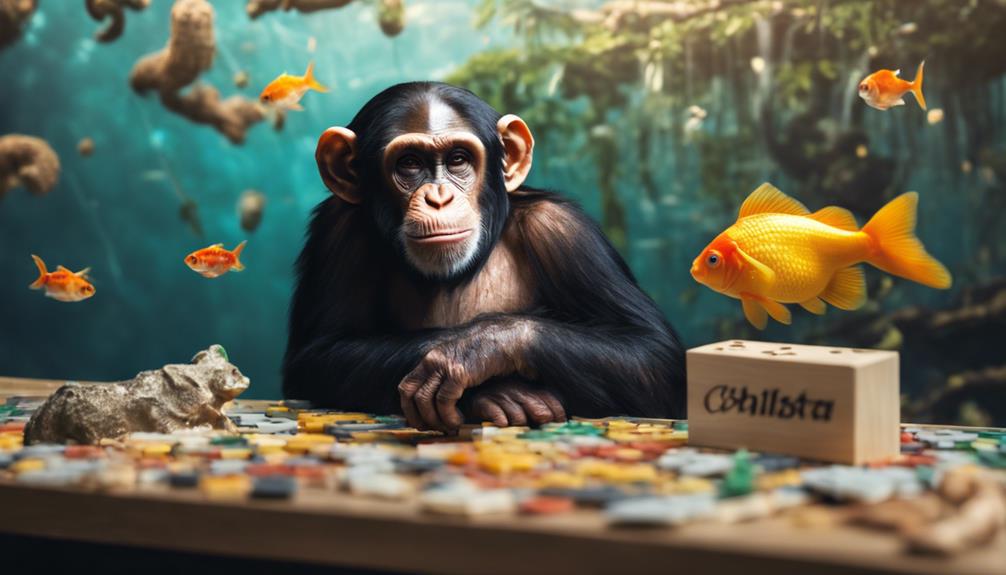When it comes to animals with the lowest IQ, sloths, koalas, armadillos, and anteaters rank low due to their specialized characteristics and limited adaptability. Then there’s the tortoise, sheep, gazelle, penguin, snail, and frog, each showcasing unique survival strategies and diverse behaviors. These creatures use their instincts, practical intelligence, and even emotional connections to thrive in their environments. Keep exploring to uncover more fascinating insights into the intriguing world of animals and their incredible adaptations.
Sloth
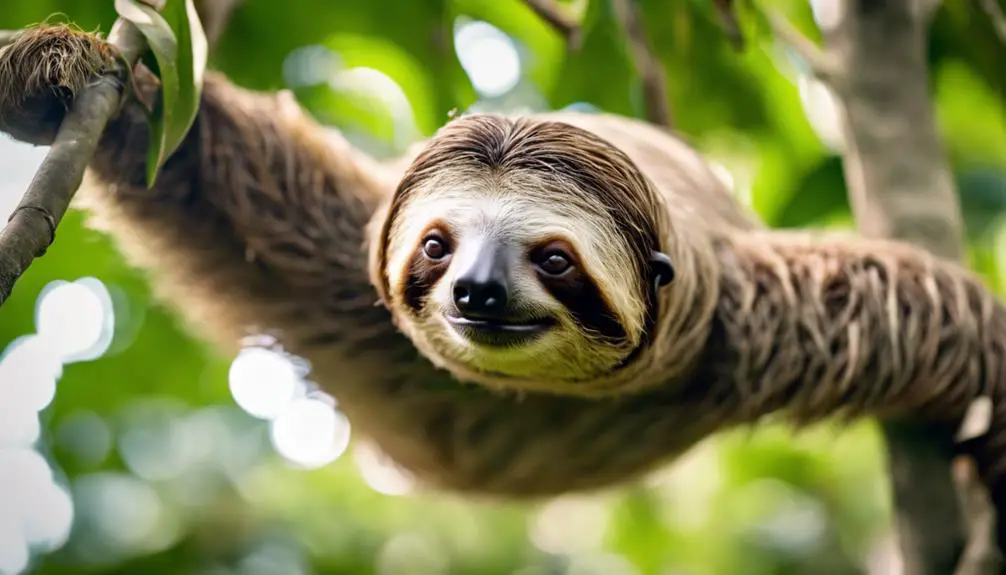
The sloth, known for its slow metabolism and adapted for survival in the canopy, showcases unique behavioral traits in the animal kingdom.
With a leisurely pace of life, you might find the sloth hanging upside down from tree branches, conserving energy in a way that seems almost alien compared to other mammals. Their deliberate movements and calm demeanor aren’t signs of laziness but rather strategic choices for survival in their arboreal habitat.
As you observe a sloth munching on leaves, you can appreciate its specialized diet and digestive system, optimized for processing low-nutrient foliage. This creature’s docile nature belies a remarkable adaptation to its environment, where blending in with the foliage and moving slowly help evade predators.
Despite its reputation for being slow-witted, the sloth’s behaviors are a demonstration of the ingenuity of nature in crafting solutions for survival in the intricate web of the rainforest canopy.
Koala
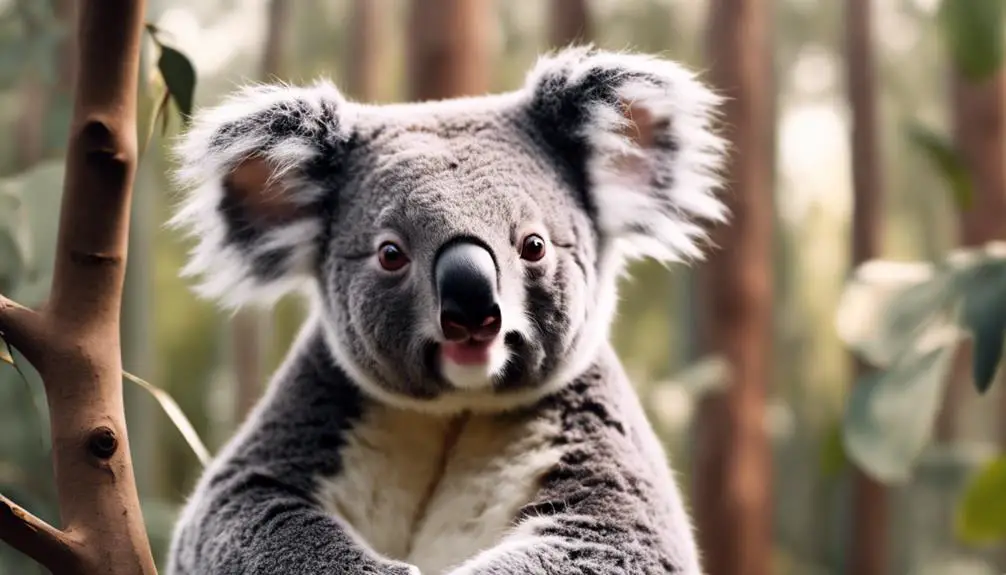
Pivoting from the discussion on sloths’ unique adaptations in the animal kingdom, let’s now shift our focus to the koala’s specialized characteristics and ecological niche.
Koalas, with their adorable appearance and affinity for eucalyptus leaves, may seem endearing, but their intelligence is particularly low. These marsupials have a limited diet and spend most of their time resting or sleeping due to the low nutritional value of eucalyptus leaves.
Koalas have evolved specific adaptations to process these leaves efficiently, such as a specialized digestive system that detoxifies the leaves’ chemicals. Despite their seemingly lazy behavior, koalas are well-adapted to their environment, with their intelligence primarily focused on survival within their ecological niche.
Their simplicity and dependency on eucalyptus trees define their cognitive abilities, making them one of the animals with the lowest IQ.
Armadillo
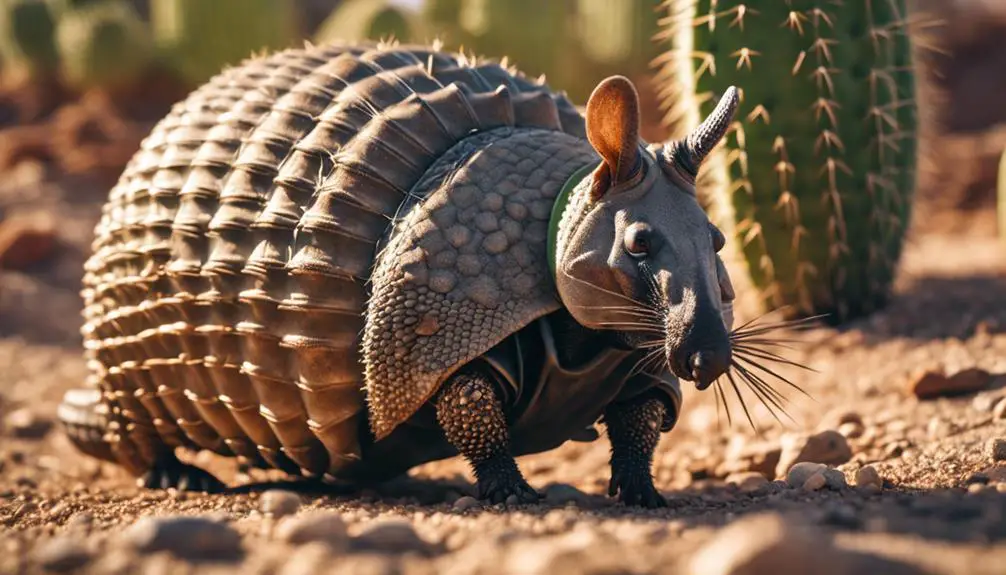
To sum up our exploration of the armadillo’s unique adaptations, let’s delve into the fascinating world of this armored creature and its specialized characteristics within the animal kingdom.
Armadillos, recognized for their shell-like armor, aren’t the brightest creatures. They rely on instinct rather than complex thinking. Their low intelligence is evident in their behavior, as they often walk into dangerous situations without much foresight. Armadillos have a limited ability to adapt to changing environments, preferring to stick to familiar routines. Their diet mainly consists of insects, which they hunt using their sharp claws.
Despite their low IQ, armadillos have survived for millions of years due to their unique physical defenses and simple yet effective survival strategies. To conclude, while armadillos may not be the sharpest animals in the kingdom, their specialized characteristics have allowed them to thrive in their specific ecological niche.
Anteater
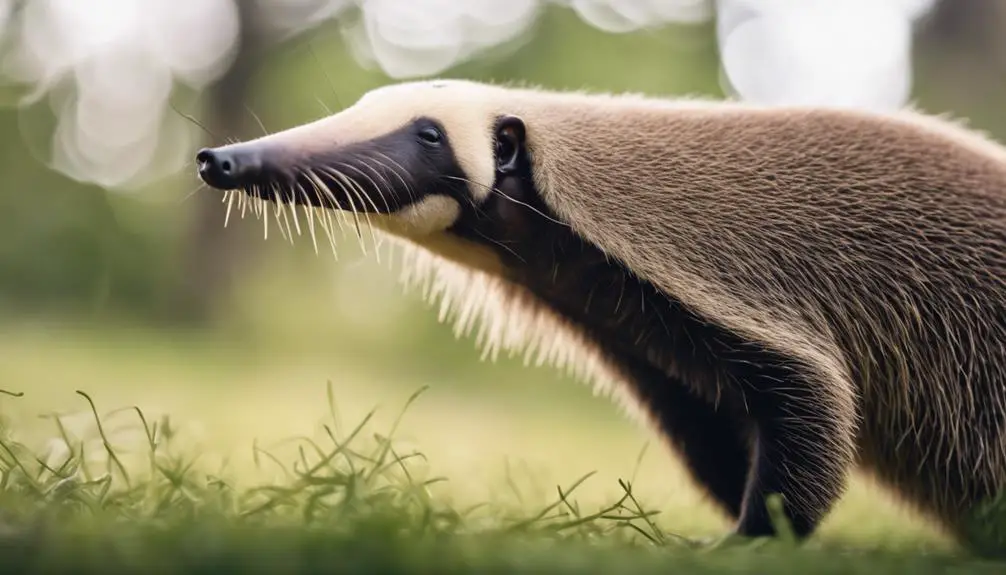
Exploring the world of the anteater reveals a creature uniquely adapted to its environment through specialized feeding skills. With its long, sticky tongue, the anteater can slurp up thousands of ants and termites in a single day. This specialized feeding technique, coupled with its sharp claws for breaking into insect colonies, allows the anteater to thrive in habitats where these invertebrates are abundant.
Anteaters rely heavily on their sense of smell to detect ant and termite nests, using their powerful claws to dig into the hard mounds. Despite their seemingly simple diet, anteaters demonstrate remarkable patience and precision in hunting down their tiny prey. Their elongated snouts and tube-like tongues are perfectly designed for extracting insects from hard-to-reach places, showcasing their remarkable adaptability in acquiring food.
In the domain of animal intelligence, the anteater’s expertise in foraging for ants and termites highlights its unique niche in the ecosystem. While their cognitive abilities may not rival those of other animals, their specialized feeding skills underscore the fascinating ways in which creatures have evolved to thrive in their specific environments.
Tortoise
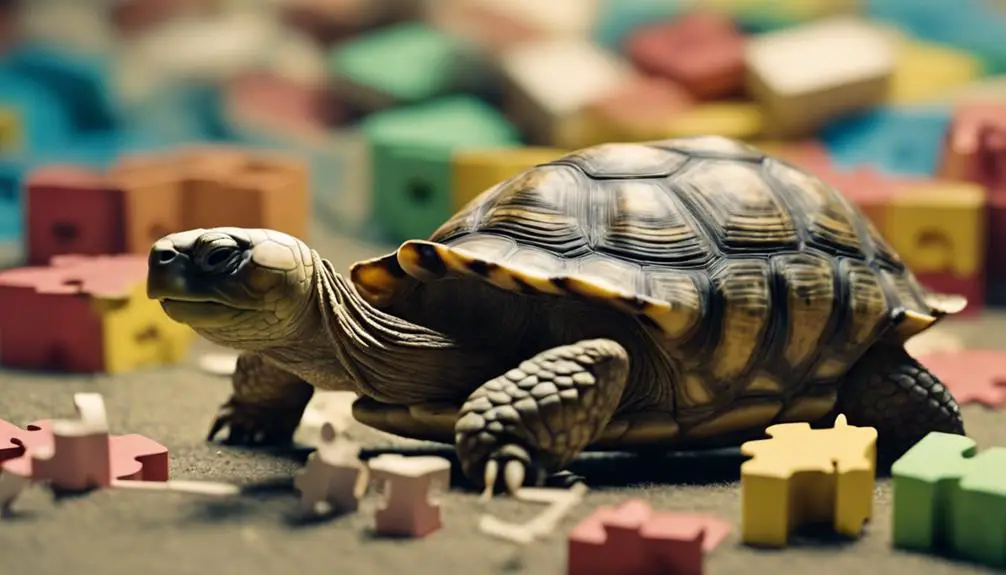
In the domain of animal intelligence and longevity, the tortoise stands out as a remarkable example of adaptation and resilience. Despite its slow movements and seemingly simple behaviors, the tortoise has evolved to thrive in various environments over many years. These creatures exhibit a unique blend of instinctual behaviors and survival strategies that have allowed them to withstand changing conditions and predators.
Tortoises may not excel in problem-solving tasks or display complex social interactions, but their ability to navigate their surroundings and find food sources showcases a form of intelligence perfectly suited to their solitary lifestyle. Their stoic demeanor and longevity add to their mystique, highlighting their ability to endure and adapt over time.
When observing a tortoise, one can appreciate the simplicity and efficiency of its actions, perfectly tailored to guarantee its survival. From finding shelter to locating food, these creatures demonstrate a practical intelligence that has enabled them to thrive for centuries.
Sheep
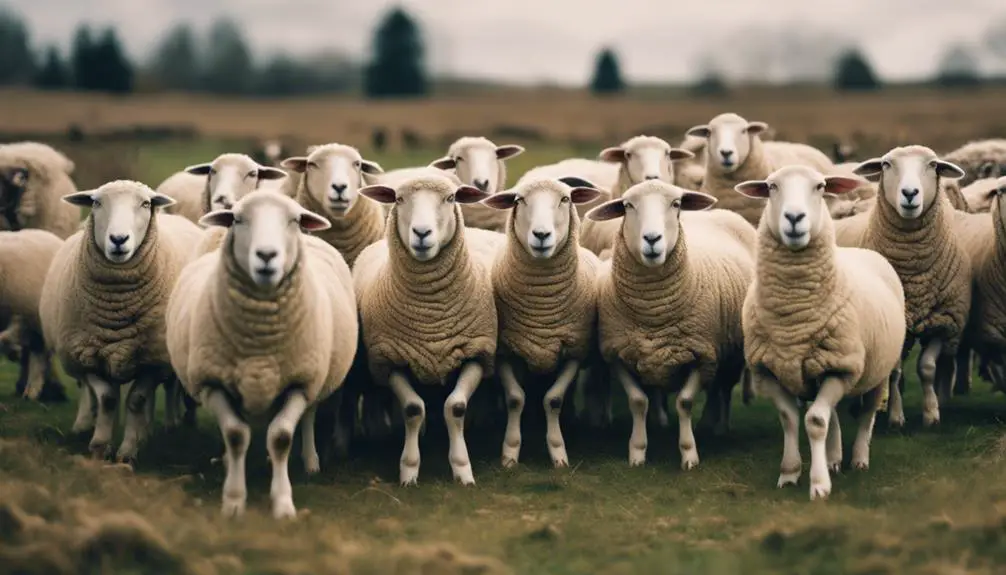
With their social sophistication and herd dynamics, sheep showcase a unique intelligence tailored for survival in group settings. Sheep rely on their strong social bonds to navigate their environment and protect themselves from predators. In a flock, they exhibit complex behaviors such as following a leader, coordinating movements, and communicating through various vocalizations.
Sheep demonstrate remarkable memory skills by recognizing familiar faces among their group and remembering familiar routes within their territory. Their ability to learn from past experiences helps them avoid dangerous situations and adapt to changing conditions. Additionally, sheep display emotional intelligence by expressing distress or contentment through body language and vocal cues.
Despite their reputation for lower cognitive abilities, sheep excel in recognizing and responding to social cues from other flock members, showcasing a form of collective intelligence that enhances their chances of survival in the wild. So, while they may not excel in individual problem-solving tasks, their strength lies in their cooperative behaviors and group dynamics.
Gazelle
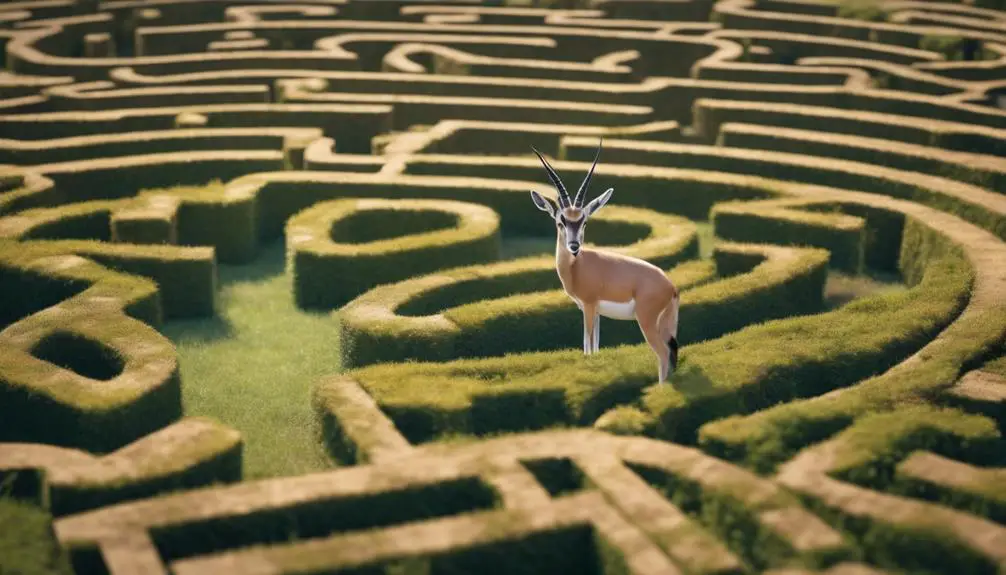
Moving on to the Gazelle, another species known for its specialized intelligence and survival strategies in the wild. Gazelles are renowned for their exceptional speed and agility, which serve as their primary defense mechanisms against predators. These graceful creatures possess keen senses that allow them to detect danger quickly, enabling them to evade threats effectively.
Gazelles also exhibit remarkable coordination and endurance, traits that are crucial for their survival in the challenging savannah environment. Their ability to navigate the open plains with precision showcases their intelligence tailored to excel in their natural habitat. Gazelles’ harmonious relationship with the savannah ecosystem is proof of their adaptive behaviors and specialized skills.
Penguin
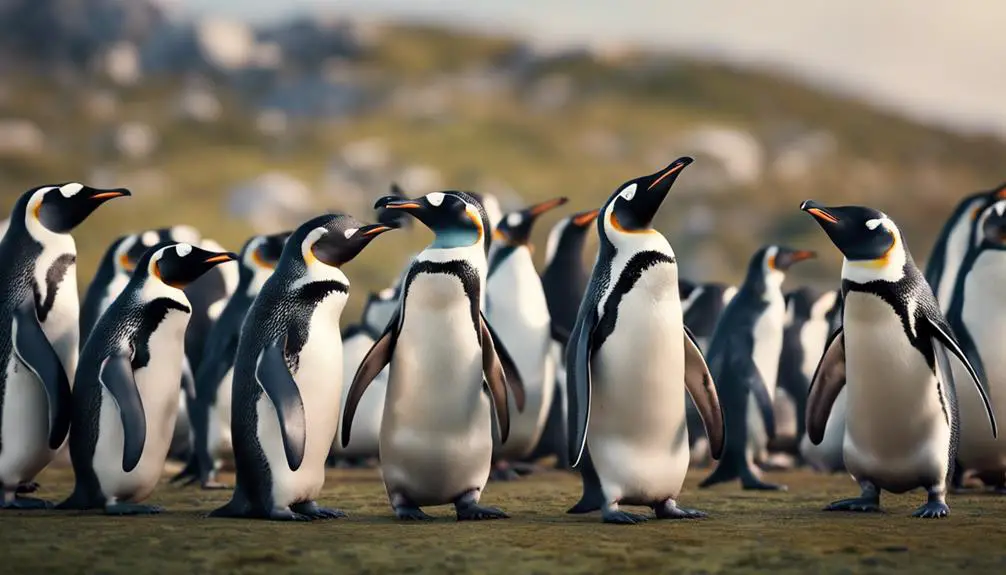
Graceful and resilient, the penguin effortlessly navigates the icy waters of its polar habitat. Despite its adorable waddle on land, in the water, penguins showcase remarkable swimming skills, reaching impressive speeds to catch prey and avoid predators. Penguins are known for their communal nesting and parenting behaviors, where they work together to protect their eggs and chicks from the harsh Antarctic conditions.
These social creatures rely on their specialized adaptations, like their waterproof feathers and dense layers of fat, to thrive in extreme cold. Penguins may not excel in problem-solving tasks traditionally used to measure intelligence, but their ability to survive and reproduce in such challenging environments demonstrates a different kind of intelligence perfectly suited to their lifestyle.
Watching these tuxedoed birds gracefully dive and glide through the frigid ocean serves as a reminder of nature’s incredible diversity and the unique ways different species have evolved to conquer their habitats.
Snail

Sliding through diverse habitats, the snail showcases remarkable adaptability in its survival strategies. Despite its reputation for having a low IQ, the snail has developed unique mechanisms to thrive in various environments. Using its slime trail for movement, the snail can navigate challenging terrains and find food efficiently. This simple yet effective strategy allows the snail to escape predators and locate suitable shelter. Additionally, the snail’s ability to retract into its shell provides a protective measure against threats, demonstrating a basic form of defense.
Although not known for its cognitive abilities, the snail’s behaviors reflect a level of intelligence tailored to its survival needs. By utilizing its environment and adapting to different conditions, the snail exemplifies nature’s ingenuity in creating resilient organisms. So, while the snail may not excel in problem-solving tasks, its instinctual responses and adaptive behaviors contribute to its overall success in the animal kingdom.
Frog
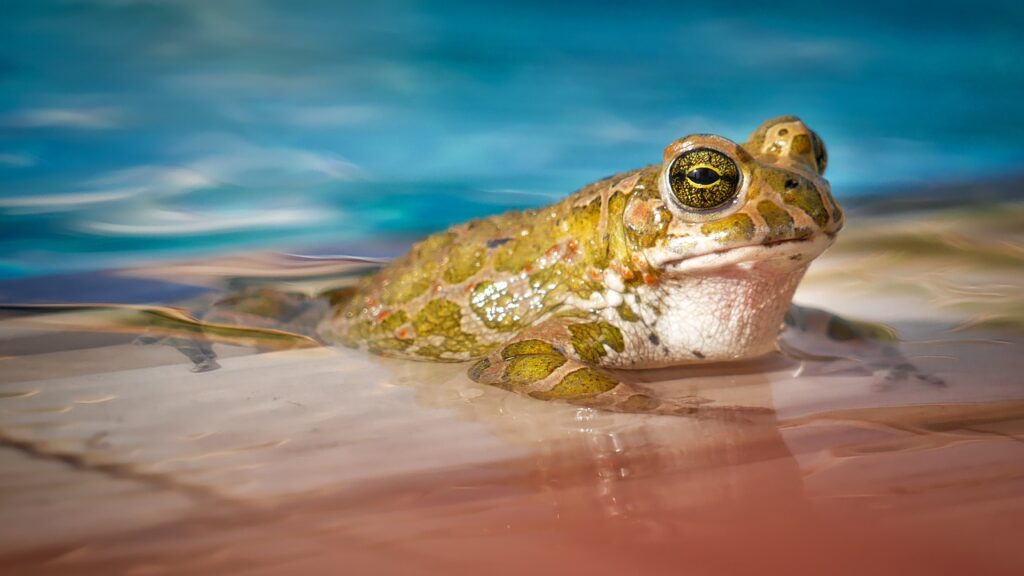
In the vibrant ecosystem, the frog showcases remarkable adaptability and diverse behaviors. Frogs are known for their unique life cycle, starting as aquatic tadpoles and transforming into terrestrial adults. This metamorphosis allows them to thrive in different environments, adapting to both land and water.
Frogs use their jumping skills for quick escapes from predators and have developed camouflage abilities to blend into their surroundings. Their vocalizations serve as warning signals and for mating rituals, showcasing a form of communication within the species. With a semi-aquatic lifestyle, frogs have specialized intelligence honed for survival in both water and on land.
Their varied defense mechanisms, such as toxic skin secretions in some species, highlight their adaptation to different ecological niches. Despite their perceived lower cognitive abilities, frogs demonstrate a level of intelligence tailored to their species’ lifestyle and ecological roles, making them fascinating creatures in the animal kingdom.

Erzsebet Frey (Eli Frey) is an ecologist and online entrepreneur with a Master of Science in Ecology from the University of Belgrade. Originally from Serbia, she has lived in Sri Lanka since 2017. Eli has worked internationally in countries like Oman, Brazil, Germany, and Sri Lanka. In 2018, she expanded into SEO and blogging, completing courses from UC Davis and Edinburgh. Eli has founded multiple websites focused on biology, ecology, environmental science, sustainable and simple living, and outdoor activities. She enjoys creating nature and simple living videos on YouTube and participates in speleology, diving, and hiking.
🌿 Explore the Wild Side!
Discover eBooks, guides, templates and stylish wildlife-themed T-shirts, notebooks, scrunchies, bandanas, and tote bags. Perfect for nature lovers and wildlife enthusiasts!
Visit My Shop →
